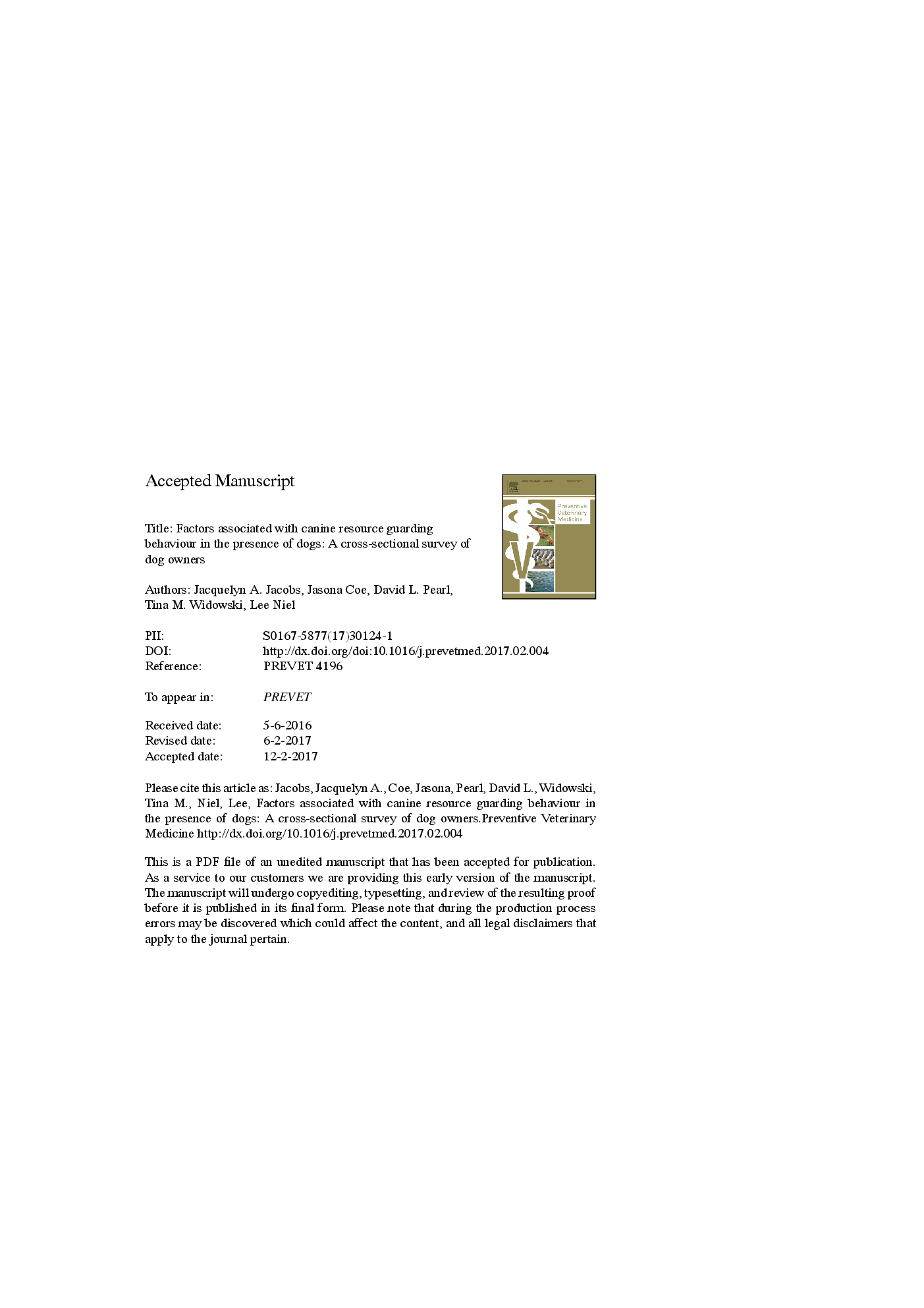ترجمه فارسی عنوان مقاله
عوامل مرتبط با رفتار نگهداری منبع سگ در حضور سگ: یک بررسی مقطعی از صاحبان سگ
عنوان انگلیسی
Factors associated with canine resource guarding behaviour in the presence of dogs: A cross-sectional survey of dog owners
| کد مقاله | سال انتشار | تعداد صفحات مقاله انگلیسی |
|---|---|---|
| 140895 | 2017 | 34 صفحه PDF |
منبع

Publisher : Elsevier - Science Direct (الزویر - ساینس دایرکت)
Journal : Preventive Veterinary Medicine, Available online 20 February 2017
ترجمه کلمات کلیدی
سگ رفتار - اخلاق، حفاظت از منابع، تجاوز مثبت، عوامل خطر،
کلمات کلیدی انگلیسی
Canine; Behaviour; Resource guarding; Possessive aggression; Risk factors;

